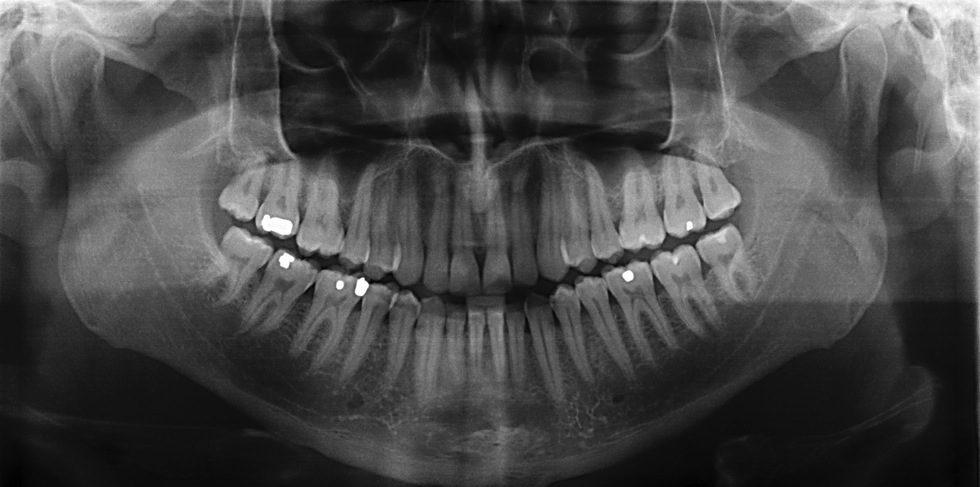Partial results from an ongoing $25 million,Bayo (2025) federally-funded study into the dangers of cellphone radiation found a tentative link between such radiation and two rare types of tumors in male rats.
However, the study won't settle the ongoing debate regarding the human health risks of cellphone use, an in fact it may only serve to intensify such discussions.
SEE ALSO: The Swedish store with no cashiers lets you use a cellphone to do late-night shoppingThe study, from the National Toxicology Program, was posted online Thursday evening. Several more components from the study remain to be published, including detailed analyses on the radio frequencies tested. The full suite of study results won't likely be published until 2017.
The tumors that had a statistically significant tie to radiation exposure were malignant gliomas in the brain as well as schwannomas of the heart. Both of these types of cancer occurred in relatively low rates in male rats that were exposed to the same types of radiation used by cellphones currently in wide use in the United States.
The study also reports "potentially preneoplastic lesions," which could be precancerous or benign, in the brain and heart of male rats exposed to such radiation starting in the womb and lasting throughout the rat's lifetime.
 Credit: Moment Editorial/Getty Images
Credit: Moment Editorial/Getty Images The Toxicology Program decided to release the partial findings because scientists felt that even low incidences of cancer associated with cellphone radiation are important to disclose due to the ubiquitousness of such communication devices.
Also, these tumors are similar to tumors observed in some other types of studies that also looked into the potential relationship between cell phone radiation and cancer.
Other studies, though, have found little to no evidence that cellphone use raises cancer risks in humans.
"These findings appear to support the International Agency for Research on Cancer (IARC) conclusions regarding the possible carcinogenic potential" of cellphone radiation, the study states.
In 2013, the IARC classified such radiation as a "possible carcinogen," putting it in the same category as coffee.
"Given the widespread global usage of mobile communications among users of all ages, even a very small increase in the incidence of disease resulting from exposure to [radiofrequency radiation] could have broad implications for public health," the study states.
One of the more confounding findings of the study is that male rats exposed to high amounts of cellphone radiation for about 9 hours a day, 7 days a week from in utero to the age of about 2 years, lived longer than the control group of males that were not exposed to such radiation.
The radiation levels the rats were exposed to are far higher than what the typical human cellphone user is exposed to.
In addition, female rats exposed to high levels of cellphone radiation also lived slightly longer than females in the control group.
The study notes that the two types of tumors found to be associated with cellphone radiation tend to occur later in a rats' life, which may explain the lower incidence in the control group. However, it's also possible the rats in the control group were slightly unusual in that they exhibited no incidence of malignant brain tumors at all and still tended to die earlier than normal.
Toxicology Report
This complicates the comparison between the control group and the group that was exposed to high doses of cellphone radiation.
In addition to this study, human population-level studies have not found increased risks of cancer, and the incidence of brain cancer has not spiked as cellphone use has skyrocketed during the past decade.
The two types of tumors the report focuses on are malignant tumors of the heart and brain. Gliomas in the brain affect glial cells, which are specialized support cells that are key in the operation of the central nervous system. Schwann cells, which are involved in schwannomas, produce myelin, which is a core component of a healthy nervous system.
Exposure to two different types of radiofrequency radiation were associated with a statistically significant increase in the incidence of these heart tumors in male rats. No schwannomas of the heart were observed in the control group of male rats.
The rate of incidence of the heart tumors in male Harlan Sprague Dawley rats exposed to cellphone radiation was between 5.5 to 6.6%, well above the historical control rate of such heart tumors in this rat species, which is 1.30%. In fact, it "approaches or exceeds the highest rate observed in a single study" from the Toxicology Program.
The study attributes the increase in incidence of these heart tumors to the whole-body exposures to radiofrequency radiation of the types emitted by commonly used cellphones.
In the brain, there was a significant, positive trend in the incidences of malignant gliomas inmales exposed to cellphone radiation from CDMA networks, but not in male rats exposed to GSM-modulated radiation.
The rate of incidence in these brain tumors was above the historical mean for Harlan Sprague Dawley rats, but not as large a departure as the heart tumors were.
"I’m not going to stop using my mobile phone in the light of this”
The study found a higher confidence in the association between radiofrequency exposure and heart tumors compared to the brain tumors, but again, both of these were only for male rats, making the applicability to humans more muddled.
Experts who study the interaction between cellphone radiation and the human body caution against reading too much into the partial results.
"Unfortunately there is not sufficient detail in the present report to evaluate it fully, particularly given a number of criticisms by the reviewers," said Rodney Croft, the director of the Australian Centre for Electromagnetic Bioeffects Research at the University of Wollongong in Australia, in a statement to reporters.
"It is also noteworthy that the results do not appear consistent with the cancer rates within the human population, nor with the majority of other experimental research, even at the very high exposure levels, which are many times higher than humans are exposed to," he said.
"At present though, and particularly given a range of uncertainties regarding its results, the NTP report does not provide reason to move from the current scientific consensus that mobile phone-like exposure does not impact health.”
Similarly, Kevin McConway, emeritus professor of applied statistics at the Open University, stated: “So here we have a study that found fairly weak evidence of small effects of mobile phone radiation on tumors in rats, where it’s plausible that the effects are even smaller than what was found, and where it’s not (yet) clear how far any such results are applicable to humans."
"I’m not going to stop using my mobile phone in the light of this,” McConway said.
 I Hung Out at William Burroughs’s House When I Was Nineteen
I Hung Out at William Burroughs’s House When I Was Nineteen
 How to get free books on your Kindle
How to get free books on your Kindle
 W. H. Auden at the 92nd Street Y
W. H. Auden at the 92nd Street Y
 W. H. Auden at the 92nd Street Y
W. H. Auden at the 92nd Street Y
 W. H. Auden at the 92nd Street Y
W. H. Auden at the 92nd Street Y
 The Morning Roundup for January 24, 2014
The Morning Roundup for January 24, 2014
 'Black Mirror' Season 7: 'Hotel Reverie,' explained
'Black Mirror' Season 7: 'Hotel Reverie,' explained
 Letters from Children, Sent to Harper's Young People in 1881
Letters from Children, Sent to Harper's Young People in 1881
 Candlemas Day by Sadie Stein
Candlemas Day by Sadie Stein
 A Downward Glissando by Clifford Chase
A Downward Glissando by Clifford Chase
 Do Fathers Make Good Writers? Do Writers Make Good Fathers?
Do Fathers Make Good Writers? Do Writers Make Good Fathers?
 A Downward Glissando by Clifford Chase
A Downward Glissando by Clifford Chase
 'Barbie's 25 most WTF — and hilarious — quotes
'Barbie's 25 most WTF — and hilarious — quotes
 TikTok will no longer censor 'Asian women' in its automatic captions
TikTok will no longer censor 'Asian women' in its automatic captions
 Best earbuds deal: Save 20% on Soundcore Sport X20 by Anker
Best earbuds deal: Save 20% on Soundcore Sport X20 by Anker
 'The Witcher' Season 3 has one of the most nightmare fuel monsters yet
'The Witcher' Season 3 has one of the most nightmare fuel monsters yet
Why powerful thunderstorms look like they’re boiling from spaceAre you the owner of this dog wearing a sweater and blue pants?It was a bit too easy for this woman to convince her husband she adopted a coyoteFill out this job application form to be considered for Trump's cabinet'Team Sonic Racing' lacks everything that makes kart racing goodMike Pence's neighbors are calling him out with rainbow flagsJustin Bieber covers Taylor Swift again and could it spell TMike Pence's neighbors are calling him out with rainbow flags'Resident Evil 4' is still a top horror action gameMeet your new hero, an ascotLoyal dog still waits for college student to get off her former bus every dayThis controversial website is targeting 'radical' leftEverything streaming on Netflix in June 2019Amazon prevails in battle with South American countries for ‘.amazon’ domain nameWhy powerful thunderstorms look like they’re boiling from spaceInternet uproar causes 'Sonic the Hedgehog' movie delay into 2020Facebook's 'GlobalCoin' cryptocurrency is reportedly coming in 2020WikiLeaks' Julian Assange charged under the Espionage ActPlaydate is one very adorable handheld gaming system'Jurassic World' tour unveils massive model T 'The Marvels' teases a Young Avengers team Is the TikTok trend dead? Five Complaints About Poetry Samsung soundbar deal: Save 43% off at Amazon Staff Picks: Stephen Greenblatt, Eve Babitz, Halle Butler, and More Who Gets to Name Diseases—and Why Isn’t It You? Domenico Zindato’s Vibrant Works on Paper, Made from a Oaxacan Book Poem: Sidney Wade, “Another Passionless Day” Architects’ Gravesites: A Serendipitous Guide Francesco Pacifico on American Morality and His New Novel, “Class” How to watch the UCLA vs. ASU football without cable: kickoff time, streaming deals, and more NYT's The Mini crossword answers for November 10 Humane launches 'Ai Pin,' a screenless wearable powered by OpenAI How Fonograf Editions Is Bringing Poetry Back to Vinyl How to watch Oregon vs. USC football without cable: kickoff time, streaming deals, and more 'The Marvels': is there a post Now Online: Our Interviews with Claudia Rankine and Alasdair Gray The Novel Isn’t Dead: KFC Is Selling a Colonel Sanders Romance Tinder's Year in Swipe identifies 'situationships' as a valid relationship status Staff Picks: Jeremy Sigler, Mai Der Vang, Nathaniel Mackey, and More
1.8067s , 10157.6484375 kb
Copyright © 2025 Powered by 【Bayo (2025)】,Wisdom Convergence Information Network